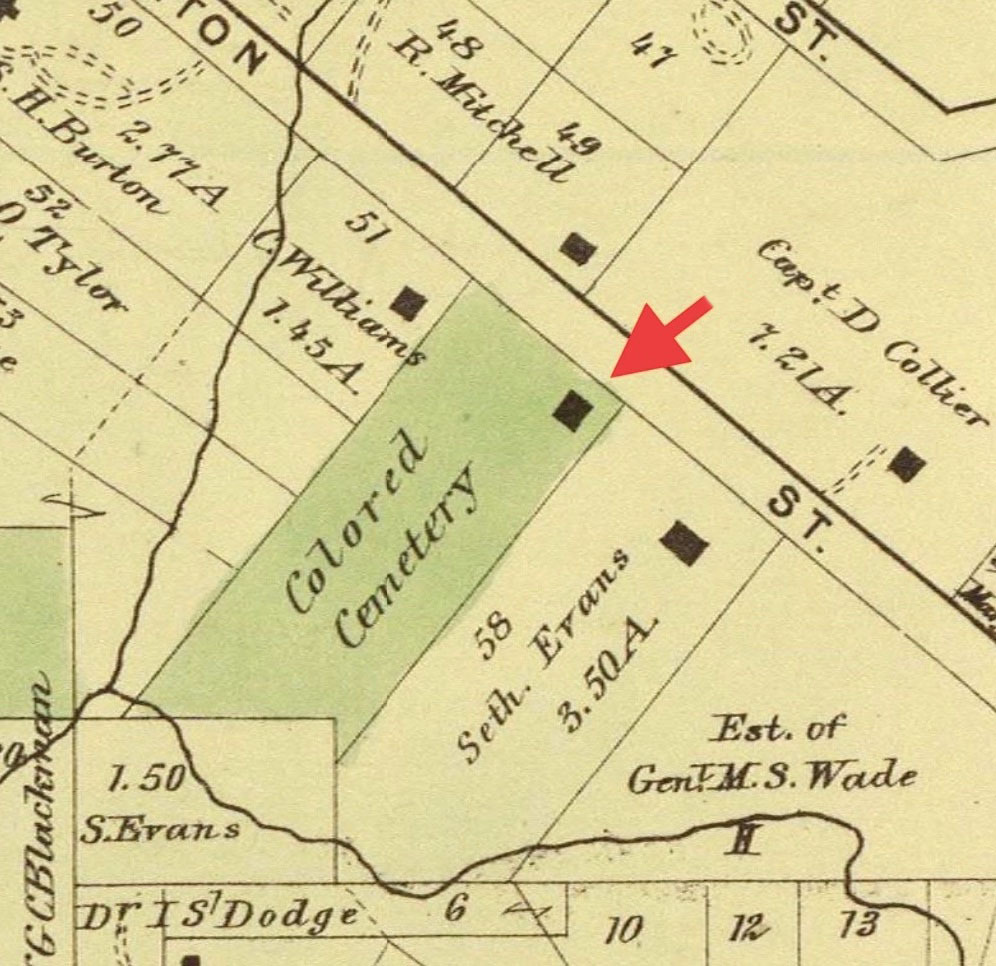Sexton’s House Site, Former “Colored Cemetery,” Avondale
A stop on the Underground Railroad

In 1848, the United Colored American Association dedicated a cemetery on what is now Burton Avenue in Avondale. The cemetery no longer exists. There are many stories about this place; an overlooked facet is its role in the Underground Railroad.
The Cincinnati Commercial for January 24, 1886, carries an article signed by E. J. of Mt Airy, Ohio. E. J. states that in 1847, he moved to Walnut Hills, where he became active in Underground Railroad work and met a man called “Brother Williams.” This is William Henry Williams, an African American who also lived in Walnut Hills.
E. J. tells of a planter who was moving west from Virginia via steamboat, bringing forty enslaved persons. When the steamer docked at Covington, these persons were placed in the Covington jail overnight. They were allowed to camp in the jail yard, which was surrounded by a tall fence. During the night, seven of them scaled the fence, stole a boat, and rowed to the Ohio side. Brother Williams found them the next morning. Here is the account by E. J.:
“Williams conducted them by a roundabout course to Avondale, and secreted them at the house of the sexton of the colored burying ground, and then went home. The old sexton was a prudent man, and his house had always been a safe place for fugitives, but he had left, and a younger man had taken his place. The imprudent young man went into the city and let the story out to some of his friends.”
William Henry Williams had a feeling that something was awry. He returned to Avondale, took the fugitives away, and had another conductor take them northward by a different route. But the story was out now, and the action in Avondale was only beginning. E. J. continues:
“Stimulated by the offer of a very large reward, about forty detectives, before nightfall, had gone to Avondale and surrounded the sexton’s house. Their horses were hitched by the fence along the roadside.”
It was understood that bounty hunters could not legally break into houses in pursuit of their prey. The bounty hunters held a parley, and the main body of them left, while a few stayed behind.
At this point, an African American man appeared and told the remaining bounty hunters that he wanted a share of the reward. He said that all seven fugitives were still inside the house, and that a wagon would pick them in an hour. The bounty hunters “retreated to a safe distance where they could observe without being observed.”
An hour later, Brother Williams pulled up with his own horse and covered wagon. Williams “drove cautiously up to the sexton’s, peering out, first one side them the other,” apparently making sure the coast was clear. The door to the house opened, there was some hurried movement, and the wagon took off. The bounty hunters gave chase.
Brother Williams put his horse at full speed. His buggy went over Mt. Auburn, then through Corryville and Cumminsville, then up Hamilton Pike. At the Hamilton Pike toll house, the pole was down. There, the bounty hunters caught up with Williams and surrounded his wagon. One of them demanded to know where Williams was going.
“Out in the country,” he replied, to buy butter, eggs, and chickens.”
“What have you got in your wagon?”
“Got some bags, and baskets, and a few other things,” Williams replied.
The bounty hunters pulled back the curtains of the covered wagon, revealing a wagon-bed devoid of passengers. By this time, the seven fugitives were at Butterworth Station. E. J. closes his story by saying, “A few days later, they were all delivered safe in Canada.”
Images
